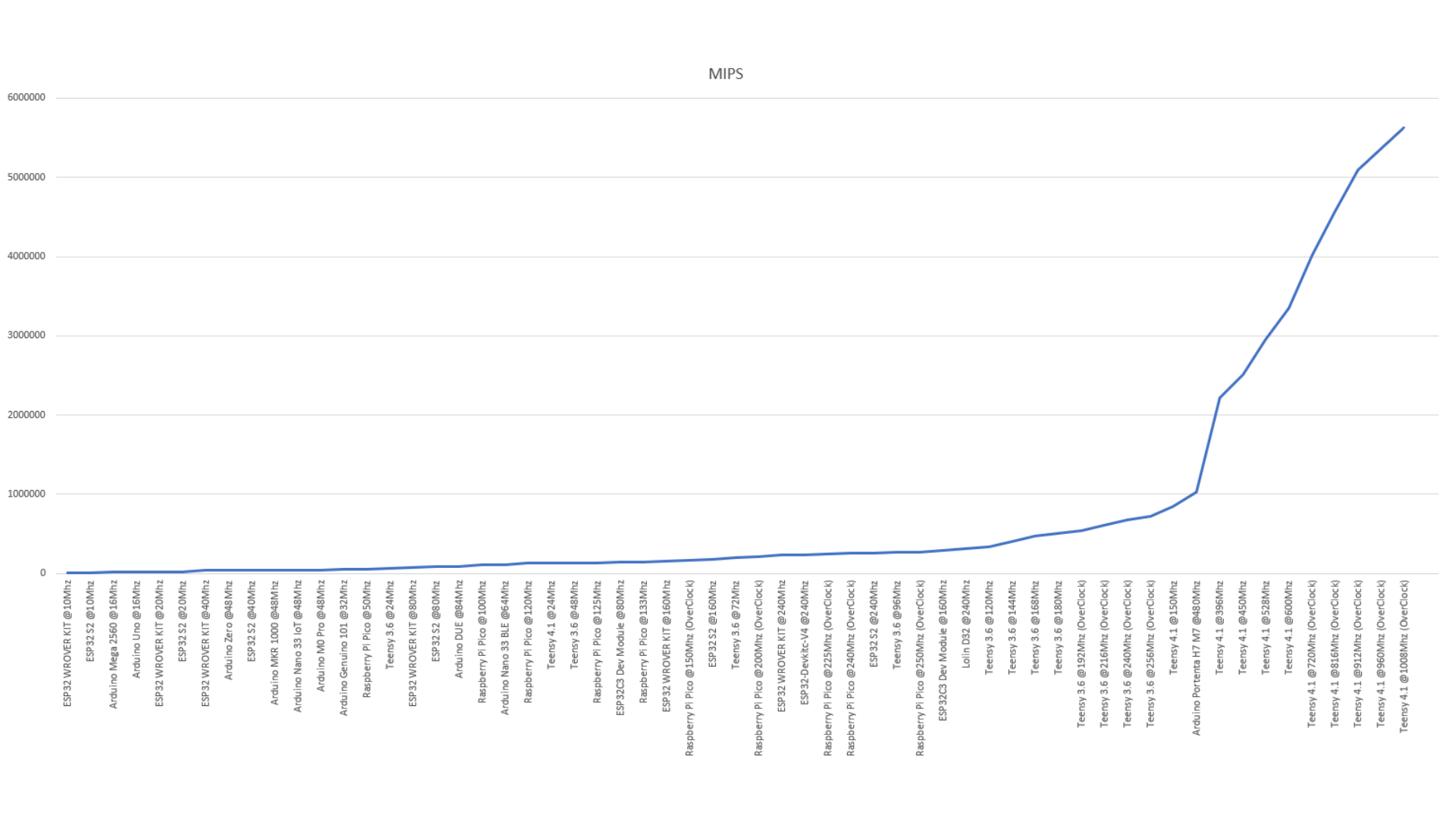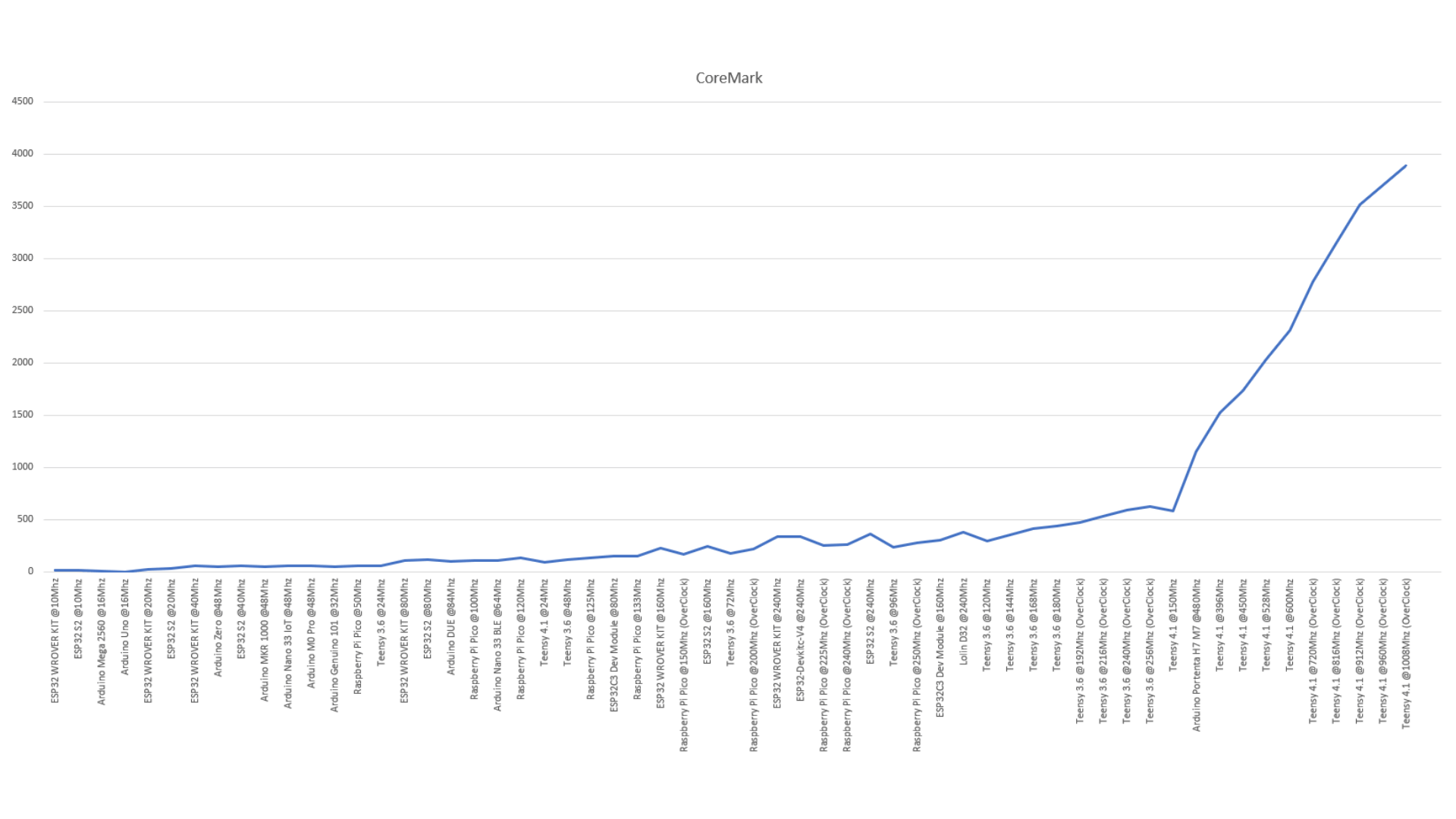With the variety of Arduino compatible boards out there, it can be difficult to know which one to choose in many aspects.
For some applications you want a powerful and fast chip, so you can perform a large volume of calculations quickly on your embedded device.
This can be useful for calculating real world data (such as working out where a sound came from with multiple microphones) or for processing large AI Models with frameworks such as Tensorflow.
We have run two benchmarking tools against a variety of Arduino compatible boards as detailed below.
Dhrystone
The Dhrystone benchmark was developed between 1984 and 1988, and uses integer calculations to perform a synthetic benchmark (Read More on Wikipedia).
There is an Arduino compatible sketch available on GitHub from Gareth Halfacree, which is also available as a Visual Micro Example Solution.
Our example sketch outputs both MIPS (Millions Instructions Per Second), as well as the default VAX MIPS.

We have then calculated the MIPS per MHz rating so we can see if there is any differences per Mhz of CPU Clock speed (This chart is in the same order as the one above)

CoreMark
The Core Mark benchmark is a more recent development from 2009 which is aimed specifically at Embedded development platforms.
The Arduino compatible sketch is available on GitHub from Paul Stoffregen, and is also available as a Visual Micro Example Solution.
This sketch outputs a score which is the result of multiple performance tests comprising linked list management, matrix multiply, and executing state machines.

Results Granular Data
All data used to generate the charts shown above can be downloaded in the spreadsheet here.